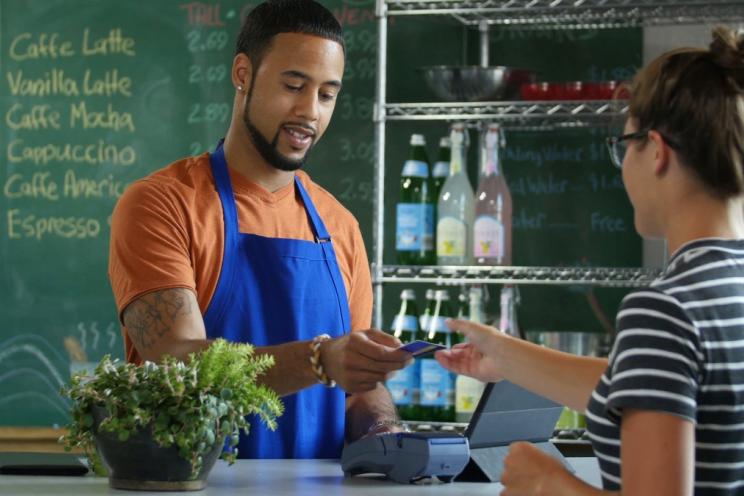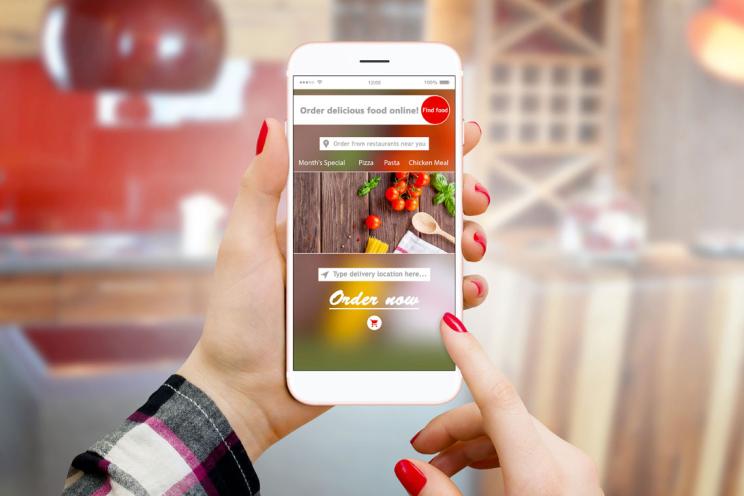This chart shows the importance of careful pricing strategies especially if you are opening a new restaurant because the higher prices are, the more careful consumers will be when choosing a restaurant.
Remember that you can fairly price your dishes but still won’t be able to sell them according to their profitability. Hence, menu engineering comes in handy to categorize your dishes into 4 main sections and to show you the place of each category on the menu:
- Stars: high profitability, high popularity
- Dogs: low profitability, low popularity
- Plow horses: low profitability, high popularity
- Puzzles: high profitability, low popularity
Strategically position high-profit items on the menu by highlighting them with eye-catching design and elements. Use menu layout and employ descriptive language to make them even more enticing to customers.
Highlight signature dishes or chef's specials can influence customers to opt for these higher-margin items, boosting overall profitability.
What are the effective menu pricing strategies that can help new restaurants thrive in a competitive market?
Cost-Based Pricing
One of the most straightforward approaches to pricing is cost-based pricing. This method involves calculating the total cost of ingredients, labor, preparation, and overhead expenses for each dish. Then add a reasonable profit margin to ensure your business remains profitable.
While this strategy ensures that your expenses are covered and helps maintain consistent profitability, it's crucial to be mindful of setting prices too high, as it may deter price-sensitive customers.
This method provides a solid foundation for pricing your dishes consistently and fairly.
Competitive Pricing through research and adaptation
Before setting your menu prices, conduct thorough market research to understand the pricing landscape of similar restaurants in your area. Competitive pricing ensures that you remain in line with your competition, making your offerings attractive to potential customers.
If your restaurant offers unique or higher-quality dishes, you might justify slightly higher prices and you should promote your added value to customers so they can understand the value of the meal they will be getting for the higher price.
On the other hand, undercutting competitors could be a viable strategy if you're targeting price-conscious diners.
Value-Based Pricing by highlighting your unique selling points
Value-based pricing relies on understanding the perceived value of your dishes in the eyes of your customers.
Start by identifying what aspects of your offerings appeal the most to your target audience and price your menu items accordingly. For example, if your restaurant emphasizes the use of high-quality, organic ingredients, and locally-sourced ingredients, customers may be willing to pay a premium for the perceived health benefits and support for local producers.
Highlight the positive aspects of your restaurant to help you to justify the higher prices you’re charging and create a loyal customer base.
Psychological Pricing
Utilize pricing psychology to influence customer perceptions. For example, setting prices just below a round number, let’s say a quinoa bag for $9.99 instead of $10 can make the item seem more affordable aiming to trick customers for a quick purchase.
Additionally, using anchor pricing, where you place a high-priced item next to a slightly lower-priced item, can make the latter seem like a better deal.
Psychological pricing also combines the effort of different functions like the marketing and sales to create irresistible offers for customers by leveraging market trends.
Bundle Pricing
Offer meal bundles or combo deals that combine several items at a slightly lower price than if customers were to order each item separately. Bundling creates a sense of value and encourages customers to try different dishes, increasing their overall spending.
It also provides an opportunity to showcase various items on your menu boosting the ones that are more profitable.
For fancy restaurants, bundle pricing can involve pairing an appetizer with a main dish and a dessert. When you choose your bundle, make sure to include a star item and a less popular item that has a high profit margin to promote it.
Seasonal Pricing
Who said you should have an invariable for all the seasons?
Seasons change and hence the produce for each season changes in supply and prices.
Adjust prices based on seasonal factors of availability and price during specific times of the year and adapt your menu and pricing accordingly to maintain profitability. Keep in mind that Adjusting prices accordingly demonstrates your restaurant's commitment to using fresh, seasonal ingredients, which can be a compelling selling point for customers.
If you do not wish to change your prices, substitute the ingredients by similar and less expensive ones.
You can add seasonal items to your menus in simple steps with digital menus but make sure to highlight seasonal specials to entice customers with fresh and unique offerings.
Limited-Time Promotions
Creating a sense of urgency can be a powerful marketing tool to attract new customers to try your restaurant and encourage repeat visits.
Implement limited-time promotions or special discounts, such as happy hour specials, weekday lunch deals especially if you were in a commercial area, or seasonal discounts. These time-limited offers can create buzz and drive traffic during slower periods.
Upselling and Add-Ons
Technology serves your business in many different ways including upselling your dishes whether in the digital menu or self-ordering kiosks that prompts customers to add items and side dishes to their orders.
Additionally, Train your staff to upsell by suggesting higher-priced menu items or add-ons that complement customers' orders.
For example, recommend premium sides or suggest a special dessert to complete your customers dining experience to increase the average check size and contribute to your restaurant's overall profitability. You should tailor your upselling suggestions to your customers’ preferences by checking their previous orders through the customer relationship management tool.
Monitoring and Adjusting
Menu pricing should not be set in stone so once everything is set, you need to continuously monitor the performance of your menu items and adjust pricing as needed based on cost fluctuations or changing market conditions especially that many pricing strategies require constant follow-up for evolving market trends and competitors’ behavior.
Regularly analyze the performance of your menu items and listen to customer feedback.
In conclusion, choosing the right menu pricing strategies is a delicate art that requires a deep understanding of your target audience, market dynamics, and the unique value your restaurant offers. Most importantly, leverage technology for seamless and efficient operations.







